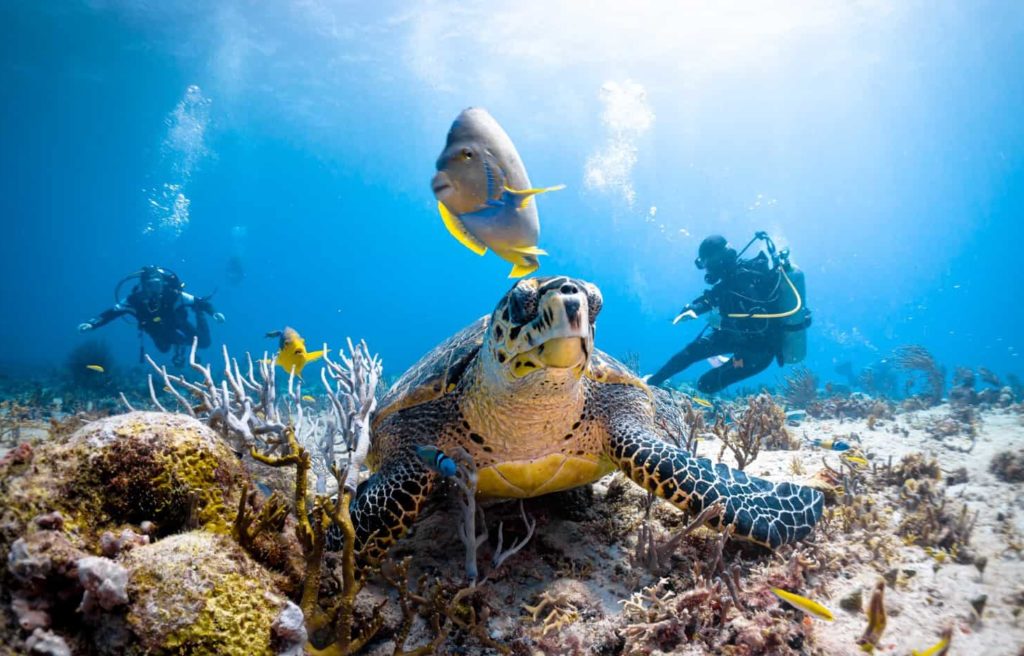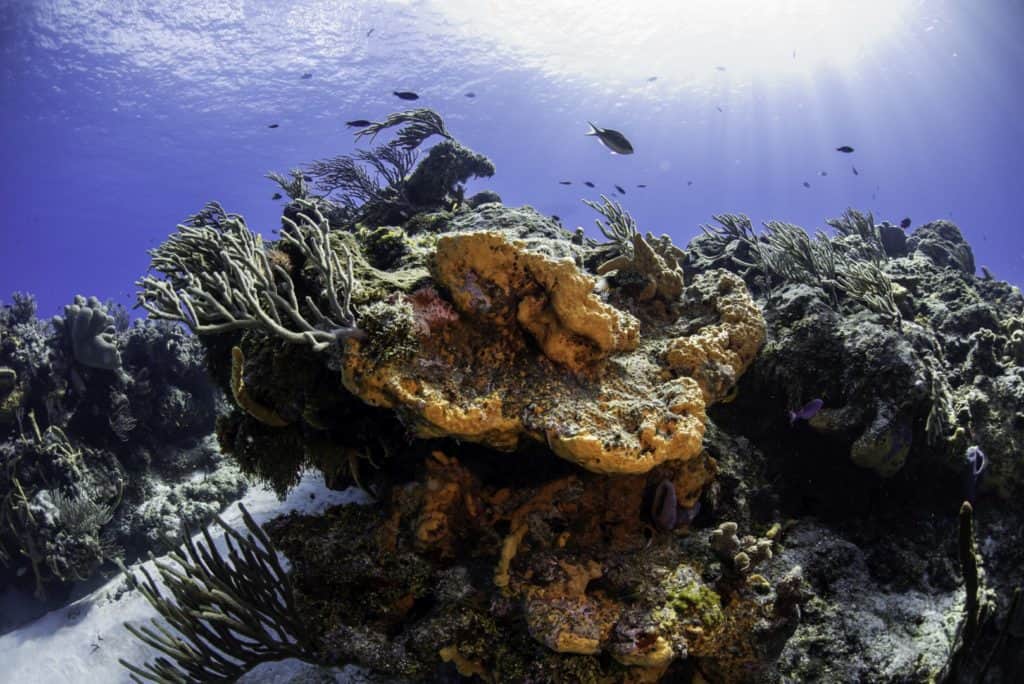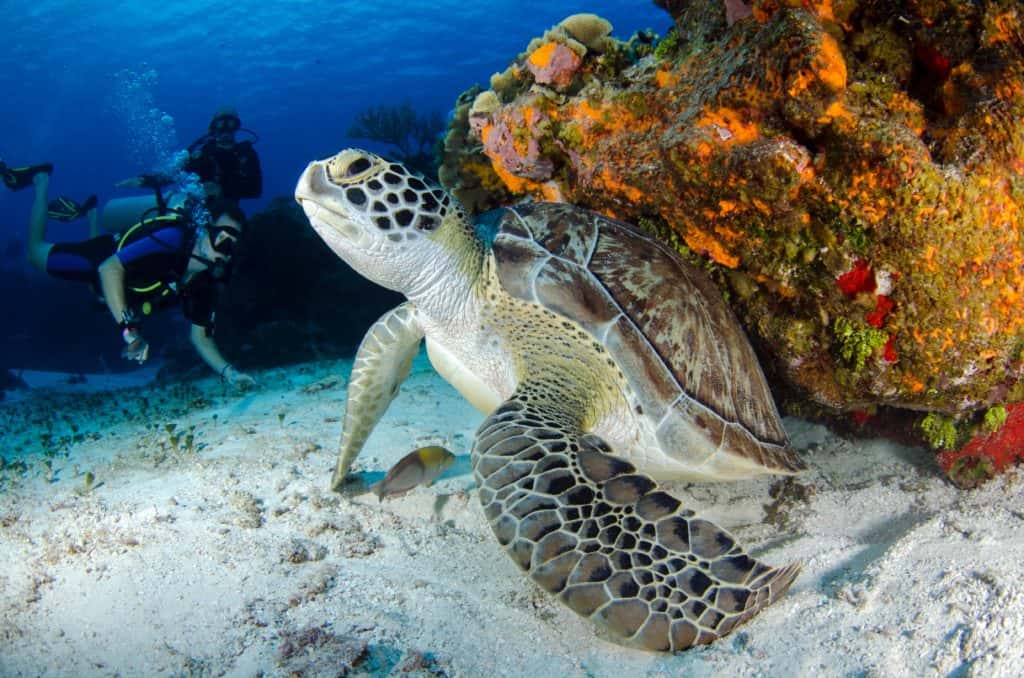The subject of touching marine life is a ‘touchy’ one to say the least. It’s no secret that touching marine life can harm both divers and marine creatures alike.
6 Reasons Why You Should Never Touch Marine Life
Many people feel the need to touch marine life, you may see the pictures of them on social media hugging a dolphin, stroking a whale shark, or holding a sea star. However, many of these people do not realize that touching marine life can harm both the animals as well as themselves.
As divers, it’s embedded into our core, that we “Take nothing but photos, leave nothing but bubbles”, and a good Divemaster’s briefing always includes a reminder not to touch or take anything below the waves. Hopefully, as a culture of responsible divers, we can educate and support unknowing people to never touch marine life.
So this article will talk about the dangers of touching marine life from both a diver’s and the animal’s perspectives.
Never Touch Marine Life – Here’s Why!
Bad For Marine Life
#1 – Touching is Harmful to Marine Animals
Human skin is covered with oils and bacteria, which can be harmful to marine species. Many fish have a layer of protective mucus over their scales that protects them from their environment, just like we humans have skin. Touching fish can wipe off this protective layer and make the animal more susceptible to infections.
The impact of this touching is not immediate, so many divers may feel like they are not directly harming the animals or coral with one little touch.

#2 – Vulnerable to Predators
The touch of human hands may also trigger a natural defense response by whatever organism was touched. For example, a porcupine fish may puff up and become spiky. Although this may seem ‘interesting’ to witness, this puts the fish under a lot of stress and will leave it susceptible to other predators afterwards, as they cannot do this repeatedly.
A defensive response for a marine creature can be anything from irritation to shock and even death depending on the type of creature and how much force was used when they were touched.
#3 – Disrupt Feeding Regimens
The food chain and circle of life in the wild are complicated and delicately balanced aspects of nature. By feeding fish, you’re adding a new source of energy to them. Entire reef systems can be upended when you change an animal population’s diet and feeding habits.
Conditioning animals to expect feeding can also disrupt critical behaviors that they need to survive.
#4 – Damages the Ecosystem
Touching and human interference causes disruption within the under the water habitat due to how fragile ecosystems are. Coral reefs are delicate structures created by living organisms.
If divers do not have good control of their buoyancy, some can kick the reef and damage the coral accidentally, causing it to break. Coral structures take so long to grow that this damage by divers can take many years to repair itself naturally.
Human damage to a reef is evident anywhere with constant or prolonged exposure to careless divers or those with poor buoyancy. In some places, divers have transformed what was once a productive and healthy ecosystem into a broken and lifeless rubble field.

Bad For Divers
#1 – Injuries For Divers
When diving in the ocean, seeing the beautiful corals, fish, and other organisms is an exciting experience. They are so beautiful in fact, that some diver’s instinct is to reach out and touch them!
Touching some types of coral may also result in chemical burns because there are toxic chemicals present on the surface of certain species that come off as soon as they’re touched; this includes fire corals and sea fans.
Some animals have defense mechanisms that are hidden in their appearance. Even the seemingly sweet and friendly surgeonfish have sharp blades where the tail fin meets the body.
#2 – Poisonous to Humans
Many marine creatures employ venoms and toxins as hunting and defense mechanisms. Some animals are covered with toxins that are extremely harmful to humans; One touch of a crown-of-thorns starfish can introduce a potent toxin, which has serious consequences.
The beautiful lionfish with its many feather-like fins has a toxic venom. The venom found in the needle-sharp dorsal, pelvic, and anal fins of a lionfish is NOT deadly to a healthy human being, though it will cause an immense amount of pain, swelling, and blistering if not treated properly.
The uglier stonefish are also harmful to humans too. Stonefish have 13 spines lining its back that release venom under pressure. If you inadvertently step on a stonefish, it will pop up its dorsal spines and release venom from two sacks at the base of each spine. The more venom that is injected, the worse it is for you. Stings result in terrible pain, swelling, tissue death, and can even kill you.
Other than this, there are many other sea creatures that can cause nasty reactions to humans, so the best way to assure an animal isn’t dangerous? Don’t touch it!

When Is It Okay To Touch Marine Life?
So maybe the question is – is it ever okay to touch marine life? Well, 99% of the time, no, but it honestly depends on the situation.
If you take part in a coral restoration program, there may be a need to touch the corals as you clean them or implant them onto the reef to grow.
If you do a ‘Dive Against Debris’ (which you should on every dive!) you may come across litter that needs to be removed from the ocean that a marine critter is close to, like a crab inside a plastic cup. Here you can gently shake the crab from the cup, in order to remove the plastic from the ocean floor.
If you get caught in a dangerous strong current, you may need to hold onto the reef in order to not become swept away. In this case, try to find a piece of bare rock and hold on using only your index finger and thumb if possible – for both your own safety and the reef. Or use a reef hook where possible.
Why Do Some People Touch Marine Life?
As a lover of the beautiful world below the waves, it is understandable to have a natural compulsion to touch the things we see underwater; we’ve all been tempted to reach out and stroke a passing turtle or shark. But being a responsible diver is knowing not to indulge in our own human urges for the sake of the animal’s wellbeing.
People who do touch marine life act possibly from arrogance or a lack of awareness. Newer open water divers standing on the coral may not realize the destruction they cause. And a divemaster picking up an octopus to show it to divers may do it thinking they are giving their divers a great experience, but at a detriment to the animal.
Social media is often awash with pictures of people stroking dolphins, holding sea stars, and taking selfies with turtles. The want of a photograph should never outweigh the stress and harm it causes to the animals.
Take Nothing but Photos, Leave Nothing but Bubbles
Respecting the ocean is a huge part of being a responsible diver. We are privileged visitors to the underwater world and should conduct ourselves accordingly.
Don’t follow the bad examples of divers who do touch marine life on social media imagery.
Keep both yourself and the marine life safe and keep your hands to yourself!
If you want to come and see the marine life of the Mexican Carribbean (without touching, of course!) contact us today to book your scuba diving package. We can show you the wonders beneath the waves in Playa del Carmen and Cozumel, take you to the hidden cenotes in the jungle, and even take you on a bull shark encounter.
We hope you liked this blog post on ‘Why touching marine life is always a bad idea!’.
If you enjoyed reading, make sure to read our other blog topics, leave us a comment, or follow us on our Facebook & Instagram pages!


